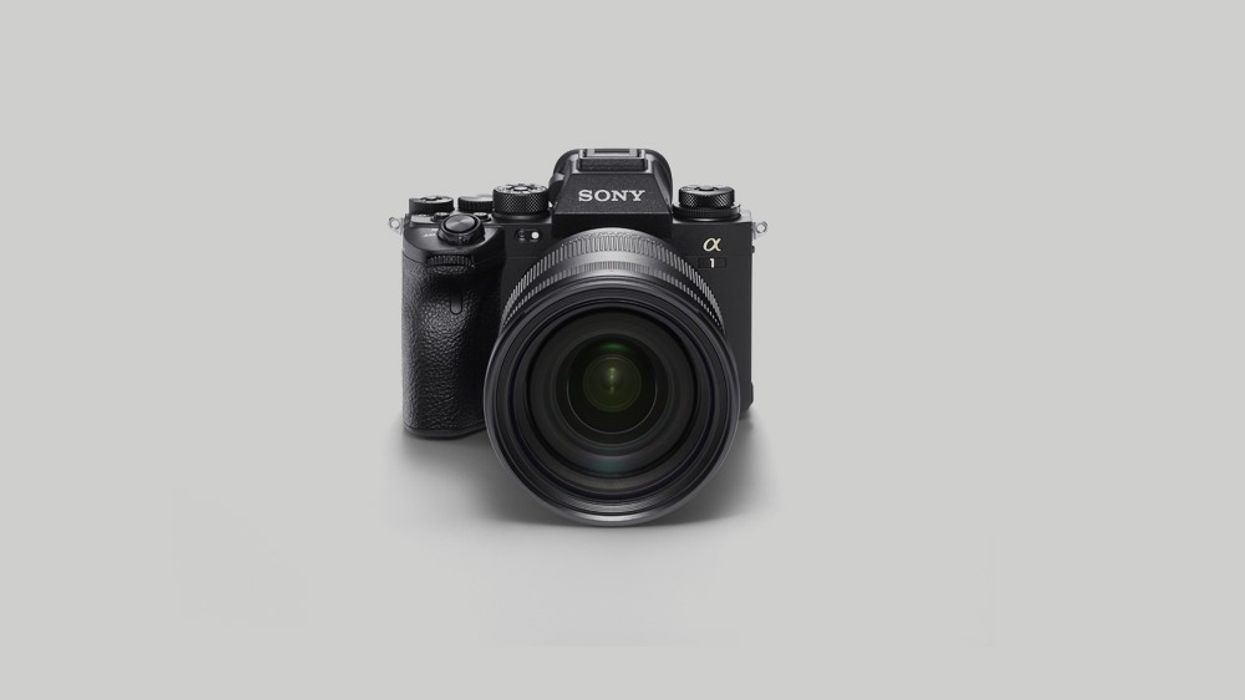Let's Dive Into the Sony Alpha 1 Video Features
The Sony Alpha 1 has been announced, and creators are blown away.

Sony has made a big splash with the release of the Alpha 1, a new full-frame mirrorless camera that can record video up to 8K 30p without pixel binning. Better yet, the a1 doesn't skimp when it comes to features found on the a7S III. It has it all and more, including 4K 120p at 10-bit 4:2:2.
Let's dive into the video features of the Alpha 1.
Key Features
- 50.1MP full-frame stacked Exmor RS CMOS Sensor
- BIONZ XR processor, 8x times more processing power
- 8K 30p 10-bit 4:2:0 XAVC HS video recording with 8.6K oversampling
- 4K 120p 10-bit 4:2:2 movie shooting capabilities
- Wide dynamic range of 15 stops for stills and 15+ stops for video
- S-Log2, S-Log3
- Improved Real-time Eye AF for humans and animals
- New Real-time Eye AF for birds
- Real-time Tracking that automatically maintains accurate focus
- 5-axis optical in-body image stabilization
- S-Cinetone color matrix as seen in FX9 and FX6
For the first time in a Sony Alpha camera, it can record 8K 30p 10-bit 4:2:0 XAVC HS recording with 8.6K oversampling. Images are captured using the full width of the sensor without pixel binning. Not only is there no line skipping, but autofocus is fully compatible at 8K and even 4K 120p.
What's been interesting in terms of sensor design as of late is that it might be easier for manufacturers to create higher-resolution sensors that don't line skip as opposed to those at 4K, which is still an issue in a lot of 4K capable cameras. Blackmagic Design developed sensor technology that has no line skipping at 12K.
8K Video Features:
- 8.6K 30p/25p/24p at 4:2:0 10-bit
- XAVC HS MPEG-H HEVC/H.265 codec
- Long GoP
- Proxy Files with HD and 8K
- Compatible with SDXC
That said, there is some give and take with the Alpha 1. The 8K chroma sampling is 4:2:0 over the preferred 4:2:2, and 8K footage is recorded at XAVC HS H.265 codec in Long GoP. H.264 is not supported.
It's also worth pointing out that Sony says shooters can expect around a 30-minute record time while shooting 8K. We asked Sony if the a1 can go immediately back into recording after the 30 minutes or if that limitation is affected in any way when in other record modes. When we get a response, we'll update this post.
That said, Sony says there are no recording limitations with the a1 in other shooting modes. 8K is also compatible with SDXC cards which will be a huge saving over CFexpress cards.
In terms of 4K performance, expect everything found on the a7S III with some boost because of the sensor design. The a1 is capable of recording 16-bit RAW externally up to 4K 60p. The camera sends a 4.3K (4332 x 2446) image externally through a full HDMI connection. When Atomos supports the camera, expect it to convert the 16-bit signal to 12-bit or 10-bit and support up to 60p.
4K/Super 35 Modes:
- Full-Frame 16:9
- 4K 10/8-bit Long GOP/All-I H.264/H.265 up to 60p
- Full-Frame 16:9 w. 1.1x crop
- 4K at 120fps 10-bit 4:2:2
- Super 35mm 16:9 (oversamples from 5.8K)
- 10/8-bit Long GOP/All-I H.264/H.265 up to 60p
When shooting 4K there is no pixel binning or line skipping, but there is a slight crop at 120p. 4K 120p is available in 10-bit or 8-bit using XAVC S-I and XAVC HS for 8-bit. Sony says there's a 2.8x improved rolling shutter when compared to the a7R IV. This is great news because even the a7S III 4K 120p footage isn't very impressive.
There is a Super35mm mode that oversamples 5.8K and does not line skip either. Both XAVC S-I and XAVC HS are supported with max bit rates up to 600Mb/s.
All picture profiles are available in every mode, including S-Log2 and S-Log3. The a1 can shoot 10-bit S-Log2/3 and Sony says it has 15 stops of dynamic range at base ISO 800. 10-bit HLG (Hybrid Log-Gamma) for HDR shooting is also available.
With the new sensor design comes better AF performance on the a1 and faster image processing when compared to the a7S III. You're also getting the same color matrix found on the FX6 and FX9 cameras with natural mid-tones, soft colors, and good highlights.
The a1 also has IBIS, which is said to be the same as the a7S III. It includes an Active IBIS mode up to 4K 60p.
Another eye-opener is the price point. The a1 is $6,500 for the body only. This is a big ask for those used to paying $2K for 4K resolution. We expect the a1 to be a bigger draw for still photographers as it looks to compete with the Canon EOS-1D X Mark III. For the video shooter, we gather that you're essentially getting the a7s III with 8K and better under the hood performance including autofocus.
Sony Alpha 1

- 50.1MP full-frame stacked Exmor RS CMOS
- 8x more powerful, next generation BIONZ XR image processor
- 8K at 30p
- 4K 120p
What remains to be seen is if the 4K performance is hands-down better than the a7S III. If so, it may be worth trading up. Pre-sale starts Jan. 27 and Sony expects to ship the camera on Feb. 24.
What do you think of the Alpha 1? Let us know in the comments below.












